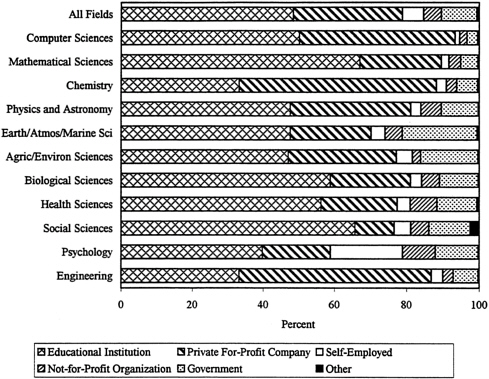3
PRINCIPAL JOB
Employment Sector
In 1995, 49 percent of science and engineering doctorates were working in educational institutions, primarily 4-year colleges and universities. Another 30 percent were employed in private for-profit companies and 6 percent were self-employed. Local, state, and federal governments employed 10 percent of science and engineering doctorates and not-for-profit organizations accounted for 5 percent (see Table 8 ).
-
Mathematical and social sciences had the highest proportions of doctorates employed in educational institutions (67 and 66 percent, respectively), while chemistry and engineering had the lowest (33 percent for each field).
FIGURE 4. Employed science and engineering Ph.D.s, by sector of employment and field, 1995.


